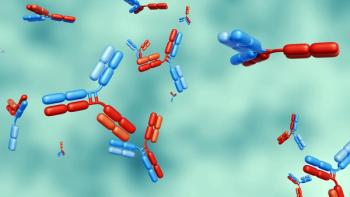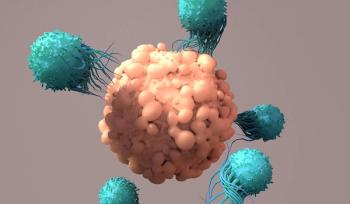
- BioPharm International-01-01-2013
- Volume 26
- Issue 1
Biologics: What Does the Future Hold?
Neil Lewis, chief technology officer at Malvern Instruments, talks about the challenges associated with biologics.
BioPharm International spoke with Neil Lewis, chief technology officer at Malvern Instruments, about the manufacturing and analytical challenges associated with biologics.
BioPharm: According to IMS Health, biologics are expected to account for approximately 17% of total global spending on medicines by 2016, and 7 of the top 10 global medicines by spending will be a biologic by mid-2017. Also, by 2015, says IMS, sales of biosimilars are expected to reach between $1.9–2.6 billion, up from $378 million for the year to the first half of 2011. How is Malvern Instruments, which is largely known for its solid dosage capabilities, positioning itself to address this growth?
Lewis: Over the past decade, as the industry has moved towards new types of molecules and new methods of delivery, we have increasingly been providing instruments for protein and nanoparticle characterization. Our portfolio of products for protein characterization especially is growing rapidly, but more importantly Malvern has embarked on a well-resourced and dedicated program of high-level partnering for technology development, in collaboration with a number of biopharmaceutical companies and respected academic leaders in the field. Through this program, our partners gain early access to emerging technologies and provide the iterative feedback that ensures we quickly develop the right measurement technologies for the industry.
Neil Lewis
Malvern's Bioscience Development Initiative is served by a dedicated team of scientists and engineers who are based at our facilities just outside of Washington, DC. We work with academia and small startups to access leading-edge technology, and with more established companies to license it in, we can test concepts and engineer prototypes to provide industry partners with early access to the measurement solutions of tomorrow. This partnering approach is being very well received by an industry that has cited analytical testing as one of the major bottlenecks in the process of screening new candidate molecules.
BioPharm: Given this projected growth, what challenges lie ahead for analytical instrumentation companies like Malvern working in the biologics space?
Lewis: Biopharmaceuticals represent a paradigm shift in the development, manufacture, storage, testing, and delivery of medicines. The fundamental 'quality' metrics for pharmaceuticals are based on purity and potency. In other words: is it the correct molecule, is it there at the right dosage strength, and are there any unintended contaminants? For traditional small-molecule pharmaceuticals, these analytical requirements are dealt with using relatively simple and established technologies such as chromatography. However, the definition of purity and potency for biopharmaceuticals is much more complex. Biopharmaceuticals are intrinsically heterogeneous in nature and contaminants can originate from any number of sources, including the therapeutic molecule itself in the form of aggregates or misfolded or completely denatured structural forms. This complexity and variability can lead to many new challenges for manufacturers and regulators alike, and the shared learning is moving at a furious pace. The challenge for a provider of analytical solutions like Malvern is to match this pace, and to the extent that it is possible, anticipate and react to the needs of the industry with an agile product development mechanism. Consequently, we are continually extending and enhancing our product portfolio to focus on some of these new 'quality attributes.'
For example, many of the challenges of selecting the 'right' candidate molecules immediately post-discovery involve a number of physicochemical testing processes that aim to help eliminate molecules that might create formulation, delivery, or manufacturing problems downstream. Very often, only small amounts of material are available for these analytical tests, and parameters such as the viscosity or the physical and chemical stability of the formulation become critical quality attributes (CQAs) that gate whether the molecule is selected for further investment.
BioPharm: What major trends and topics do you expect to see popping up in the biologics analytical and manufacturing industry?
Lewis: Rapid technical developments in the industry, and the drive towards engineered antibodies that go beyond the established monoclonal market, continue at an ever-increasing speed, and the regulatory environment is working hard to keep pace. In addition, the emergence of new guidelines governing the production of biosimilars in both Europe and the US is creating new and more sophisticated analytical testing requirements. For example, while the application of existing technologies that measure the occurrence of protein particles or aggregates in finished products is a hot topic, measurement technologies that dig deeper into the physical and chemical mechanisms that drive these interactions are becoming more important. Understanding the fundamental quality attributes for developing robust and stable formulations is essential. This is a logical extension of the quality by design (QbD) versus quality by testing philosophy that has been a recurring theme from FDA.
There is an increasing need to develop a complete picture of particles and aggregates in biopharmaceutical products and an emphasis on physicochemical product characterization—both of contaminants and intrinsic particles. As with the QbD initiative in the small-molecule business, this problem will also be tackled by characterization during the development process, not just via quality assurance/quality control during manufacturing. Such moves will drive the need to deal with low volume yet high concentration samples, as well as complete formulations. It seems likely that appreciable progress towards adopting technologies that improve product knowledge and process understanding will only be achieved through enhanced cooperation among the bioscience industry, regulatory agencies, and analytical instrumentation manufacturers.
Neil Lewis, chief technology officer, Malvern Instruments
Articles in this issue
almost 13 years ago
Accelerating Change Marks 2012 for Life Sciencesalmost 13 years ago
A Look Ahead at BioPharma Manufacturing and Regulationalmost 13 years ago
Epigenetics Drives Pharma Innovationalmost 13 years ago
A Look Ahead in Biomanufacturingalmost 13 years ago
Drug Quality at Center Stage for FDA and Manufacturersalmost 13 years ago
Falsified Medicines Directive Takes Shape in Europealmost 13 years ago
The Future of Biopharmaalmost 13 years ago
Report from Brazilalmost 13 years ago
Aseptic Processing: A Primeralmost 13 years ago
Polishing Complex Therapeutic ProteinsNewsletter
Stay at the forefront of biopharmaceutical innovation—subscribe to BioPharm International for expert insights on drug development, manufacturing, compliance, and more.





